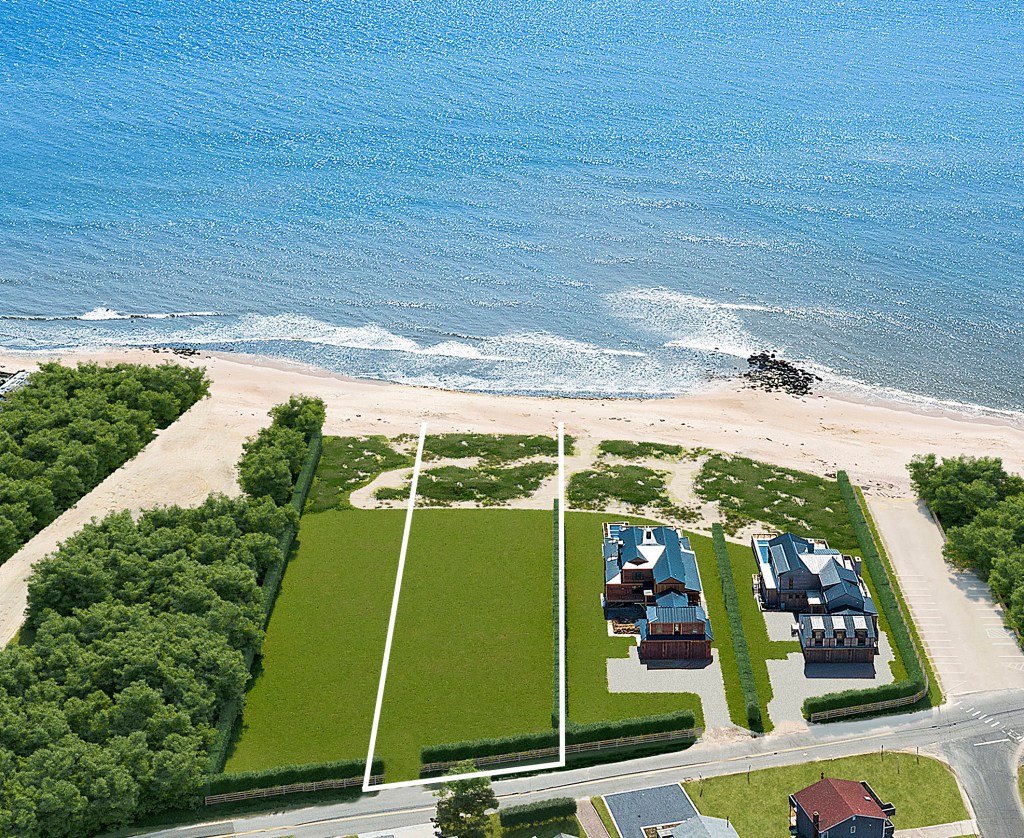How Georgica Beach Could Become a Swamp
When white men first came to eastern Long Island in the 17th century, they realized that the land alongside the three ponds on the South Fork would benefit by being “cut” about every six months, or whenever water levels rose too high. These ponds, Georgica, Sagaponack and Mecox, as the Indians called them, were just mud and flies along their shores most of the time. The rains would come and the ponds would overflow their banks. Then the sun would come out and the water would evaporate them down to their normal size. There was no natural outlet for them, which one could easily see should be to the ocean. Their southern reaches came within 100 yards or so of the ocean. What if, when they were engorged with water, they made a “cut” through the sand? Let the water flow out? They tried it. And so they found that they could stop the pond from overflowing the banks. Furthermore, they found that the land on either side now was rich and dark, just perfect for growing crops, as long as you could keep the pond out.
Thus began a tradition, in the 17th century, in which twice a year or more the town fathers would ring the church bells and strong young men were called to pick up their shovels and come down to the beach to dig the trench from pond to ocean. They’d make the cut first by the ocean, then shovel the trench back and right up to the edge of the pond on high ground. At the end, the final shovelfuls would result in the land giving way and the pond water cascading down the sluiceway and into the sea. Days later, with the pond low and with the ocean surf coming up into the pond at high tide, and the pond letting out just a little bit of water at low tide, the trench would naturally heal, and the letting of the pond would be considered over and done for the next six months.
There were sharp penalties for those men who did not heed the call of the church bells. They consisted of fines or spending the day in the jail or the stocks in front of it so passersby could ridicule them. You can read about these penalties in the old town records.
Soon, the town fathers created a group known as the “Trustees” whose job it was to supervise, among other things, the letting of the three ponds. The creation of this group was formalized by the Dongan Patent, signed by King James II in 1686. And from that day until this, the letting of the pond has been decided in both Southampton and East Hampton by those respective towns’ trustees. The Trustees, who are often clammers or commercial fishermen, serve two-year terms. They are separate from the town government. And since their formation, the Trustees must consider such things as the salinity of the water, which is brackish—a mix between the salt water of the sea and the fresh water of the pond. They also monitor the height of the pond and the health of its shellfish and sea life before they make this decision. At times, they have clashed with the wealthy who today own summer homes on the pond, and who want it let when their basements get damp. But the Trustees rule.
To access these ponds, the Trustees use modern equipment—backhoes and trucks and so forth—and they use dirt access roads that go down to the ocean beach in order to do this. Of course, they can do this from either the eastern or western approach to the beach. And their roads are kept open for this purpose and for other purposes, such as when emergency vehicles need to access the beach to assist a drowning man, or to assist in the handling of sea lions or seals who come up on the beach, or to assist when ships founder on the beaches. They have right of passage according to these ancient laws. Or do they?
Last month, Diane McNally, clerk of the East Hampton Town Trustees, opened a letter at her desk in the Trustees’ offices on Bluff Road in Amagansett and read a message to the Trustees from an attorney representing the Georgica Association, which is a group of homes that border the western side of Georgica Road. The Georgica Association is a private association. The land these homes are built upon is owned in common. One narrow road swings down from Wainscott’s Main Street to traverse the full length of the road through it it to the ocean. There is a PRIVATE ROAD sign that greets you when you come in that way.
Near the ocean end of the Georgica Association, this privately owned land goes all the way along the beach until very near to Beach Lane in Wainscott, which is a public road that dead ends at the beach. It is possible to reach the property of the Georgica Association in a four-wheel drive truck or vehicle by driving down to the end of Beach Lane and going onto the sand and thence eastward toward the cut. You’d pass across beach land owned by the Georgica Association to do this. It’s about half a mile from Beach Lane to the cut. As the beach in front of the Georgica Association is part of that private land—deeds even predate 1686— you can argue that the right to pass across this beach could be the subject for legal dispute.
Here is what the letter that McNally received said, as reported by The East Hampton Star:
“Dear Ms. McNally:
“…no further use of the Association’s property is permitted to the Trustees and its contractors in connection with dredging Georgica Pond;… Moreover, the use of the Association’s property by the Trustees for any commercial purpose of any kind whatsoever is not permitted.
Please know that the Association has asked us to enforce their rights with extreme vigor.
If the Trustees desire use of Association property, please contact us to discuss the issues of price, insurance, indemnification, etc.”
Not very neighborly, particularly toward those who live on the other shore, the eastern shore of the pond, is it? The Trustees met a few nights later to consider the significance of this matter. To defend their rights to traverse the beach they’d have to hire expensive lawyers. Rather than go that route, they thought, perhaps they could meet with the lawyers for the Georgica Association? They also decided to investigate how they could get their trucks out to this cut on the eastern side of Georgica Pond, where there are still more very large and expensive mansions.
You know the phrase “cutting off your nose to spite your face?” What if the folks on the eastern shore, not wanting those trucks coming across the beach every six months, also send the Trustees a letter?
In today’s law, stiff fines await anyone who tampers with the sea life and bird life that inhabit Georgica Pond, which, without challenge, is a public pond whose bottom is controlled by this same 1686 law by the Trustees.
What if, when all is said and done, the Trustees cannot find any agreeable way to let Georgica Pond? There are no aerial photos showing what the pond looked like back in the 17th century. But there are descriptions of what it was like. The homes surrounding the pond would soon be flooded by the rising waters of the pond, the result of which would be the turning of lawns into wetlands and swamp, and the whole place abuzz with flies and mud. It sounds fantastic if you are an environmentalist. We await developments.



